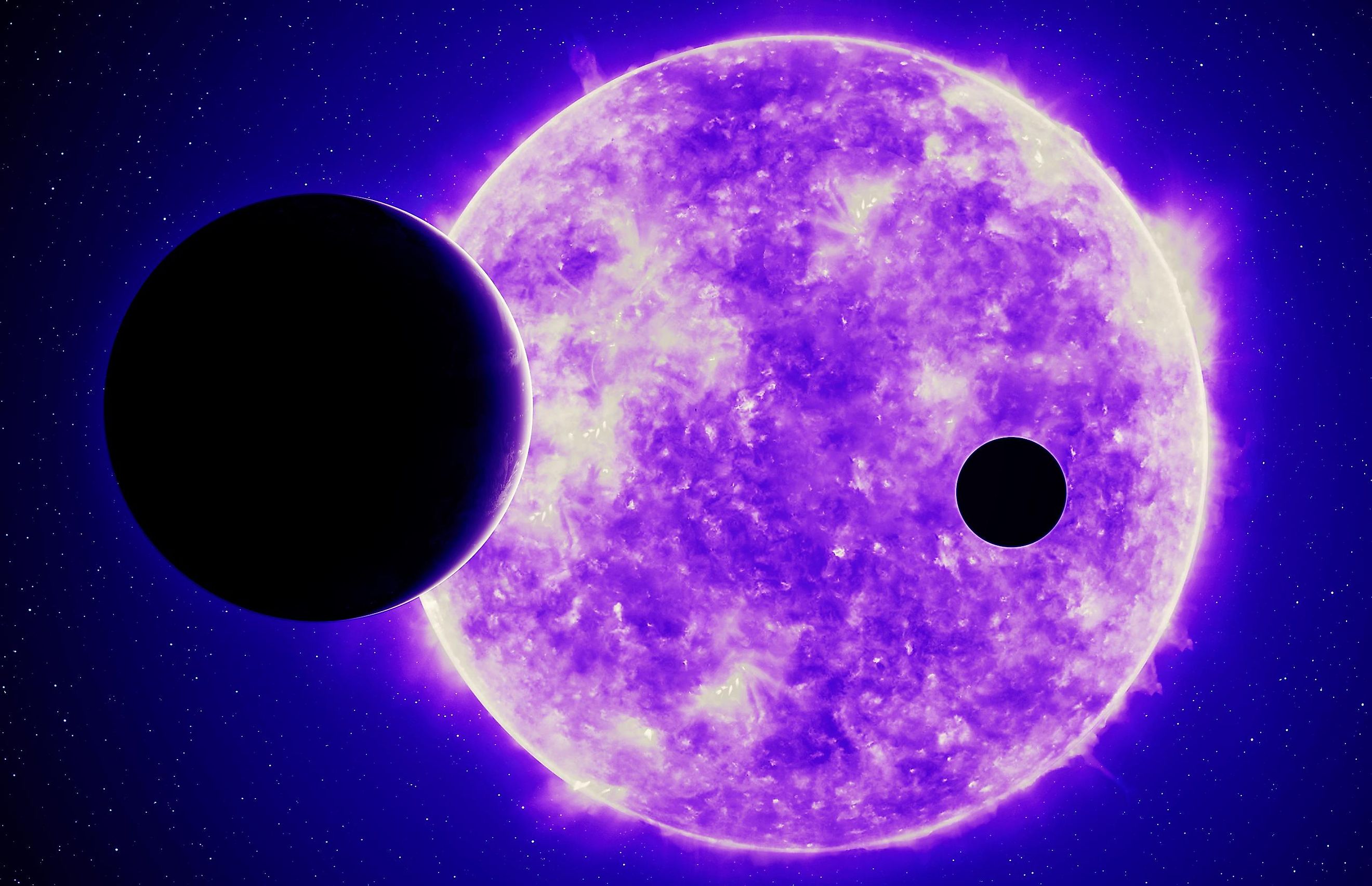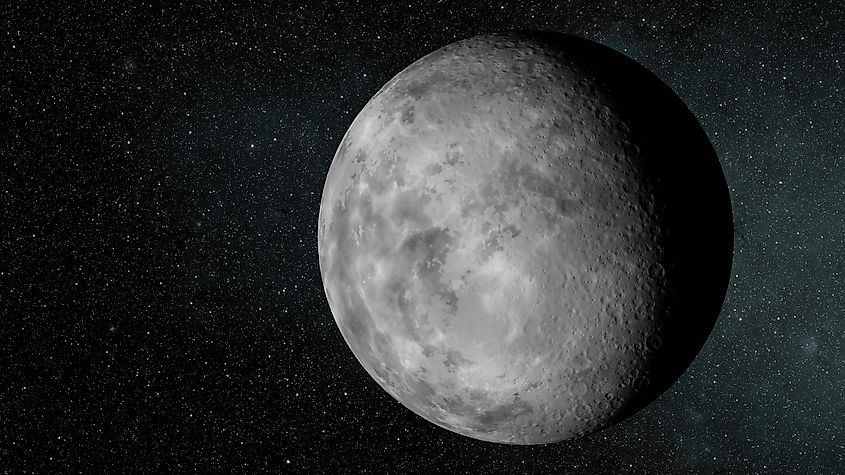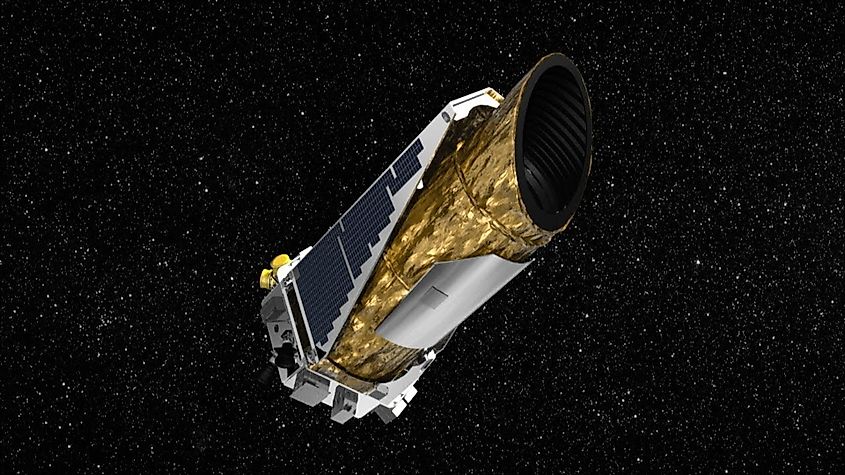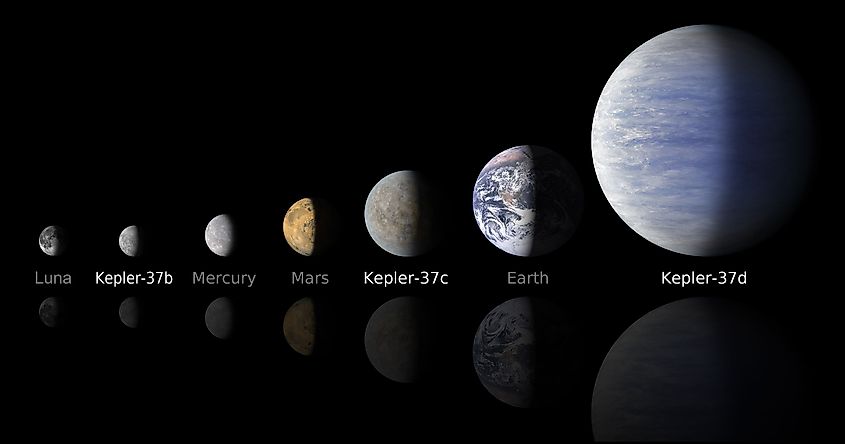
The Smallest Exoplanet Ever Found
Planets come in a wide diversity of sizes. Even in just our own solar system, the planets range from Mercury’s diameter of 2,975-miles (4,789-kilometres) to Jupiter’s diameter of 86,880-miles (139,820-kilometres). Every planet is a different size, yet even our solar system only represents a fraction of the variations in planet size. Beyond our solar system, scientists have discovered over 5,000 exoplanets. Some are even larger than Jupiter, while the smallest ever found is only slightly larger than Earth’s moon. What is the smallest exoplanet ever found?
Kepler-37b

To date, the smallest exoplanet ever found is a rocky planet called Kepler-37b. It orbits the star Kepler-37, a star that belongs to the same stellar class as our sun, in the constellation Lyra. The star itself is located 209-light years away. Kepler-37b has a radius that is only 35% the size of Earth. Meanwhile, the moon has a radius 27% the size of Earth’s, and Mercury has a radius 38% the size of Earth’s. This makes Kepler-37b slightly larger than the moon, and slightly smaller than Mercury. Kepler-37b was discovered in 2013 by the Kepler Space Telescope. Kepler is a planet hunting telescope, and during its mission, it discovered the vast majority of known exoplanets. To discover exoplanets, Kepler used what is known as the transit method. The transit method is rather simple, and all it does is look for any changes in a star’s light caused by a planet passing in front of a star. When a planet does pass in front of a star, it will block a small amount of light that would otherwise be captured by a telescope. If the same amount of starlight is blocked consistently over a period of time, astronomers can then infer the existence of a planet. Interestingly, the transit method is biased towards larger planets since they block a higher amount of starlight, and so finding planets the size of Earth and smaller is actually quite rare and difficult. Planets the size of Kepler-37b, called sub-Earths, are actually among the least common planets discovered.
Host Star And Orbit

As was stated above, the host star, Kepler-37, is similar to our sun. Both are classified as G-type stars, and so their size, mass, and temperatures are quite similar. Kepler-37 is about 80% the mass and size of our sun, and it is slightly cooler. Furthermore, it is estimated to be about a billion years older than our sun, suggesting that its planets are also about a billion years older than any of the planets in our solar system. Discovering a planet as small as Kepler-37b around a sun-like star is rare, and the only reason Kepler-37b was discovered is due to its distance from its star and its orbital period. Kepler-37b orbits its star at a distance of about 9.3-million miles (15-million kilometres) and it only takes the planet about 13-days to orbit its star. Meanwhile, Mercury, the closest planet to the sun in our solar system, is about 36-million miles (58-million kilometres) away from the sun and takes 88-days to orbit the sun.
Surface Of Kepler-37b
Technology is currently not advanced enough to take detailed images of an exoplanet’s surface. There are some things that can be inferred, however, based on what is known about an exoplanet. In the case of Kepler-37b, its size suggests that it is composed mostly of rock and metal, a composition similar to the rocky planets in our solar system. Since it orbits so close to its host star, it likely has an extremely high surface temperature. Astronomers estimate Kepler-37b’s surface temperature to be around 800-degrees Fahrenheit (427-degrees Celsius). That is far too hot to support the existence of liquid water, and so Kepler-37b is very likely not a habitable world. Given its size and surface temperature, astronomers believe the planet likely does not have any atmosphere.
Other Planets Of Kepler-37

Kepler-37b is not alone. In fact, the host star, Kepler-37, is orbited by a total of three confirmed exoplanets, with Kepler-37b being the smallest and innermost of the solar system. The other planets are Kepler-37c and 37d. Like Kepler-37b, 37c is smaller than the Earth, while 37d is nearly twice the size of our home planet. Each exoplanet orbits far too close to their host star to be located within the habitable zone, and so none are considered to be potentially habitable worlds.











